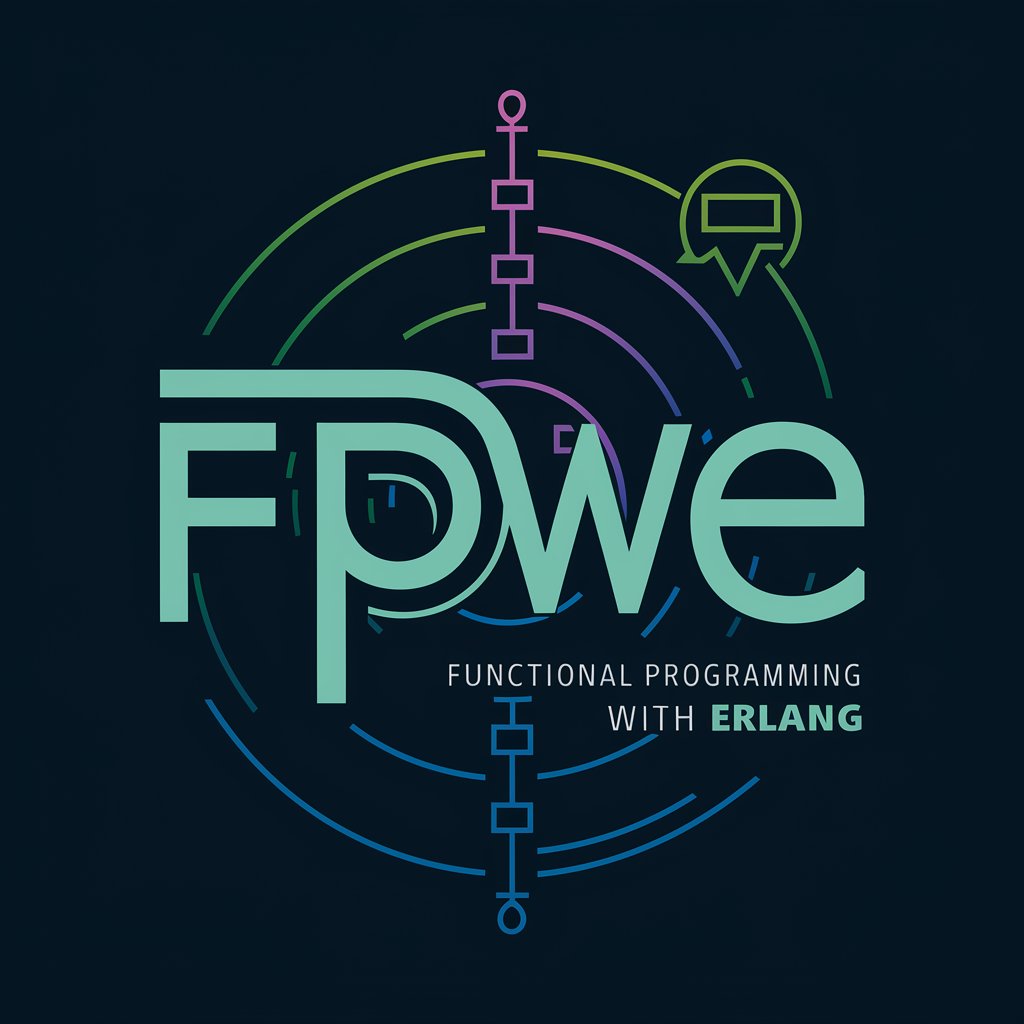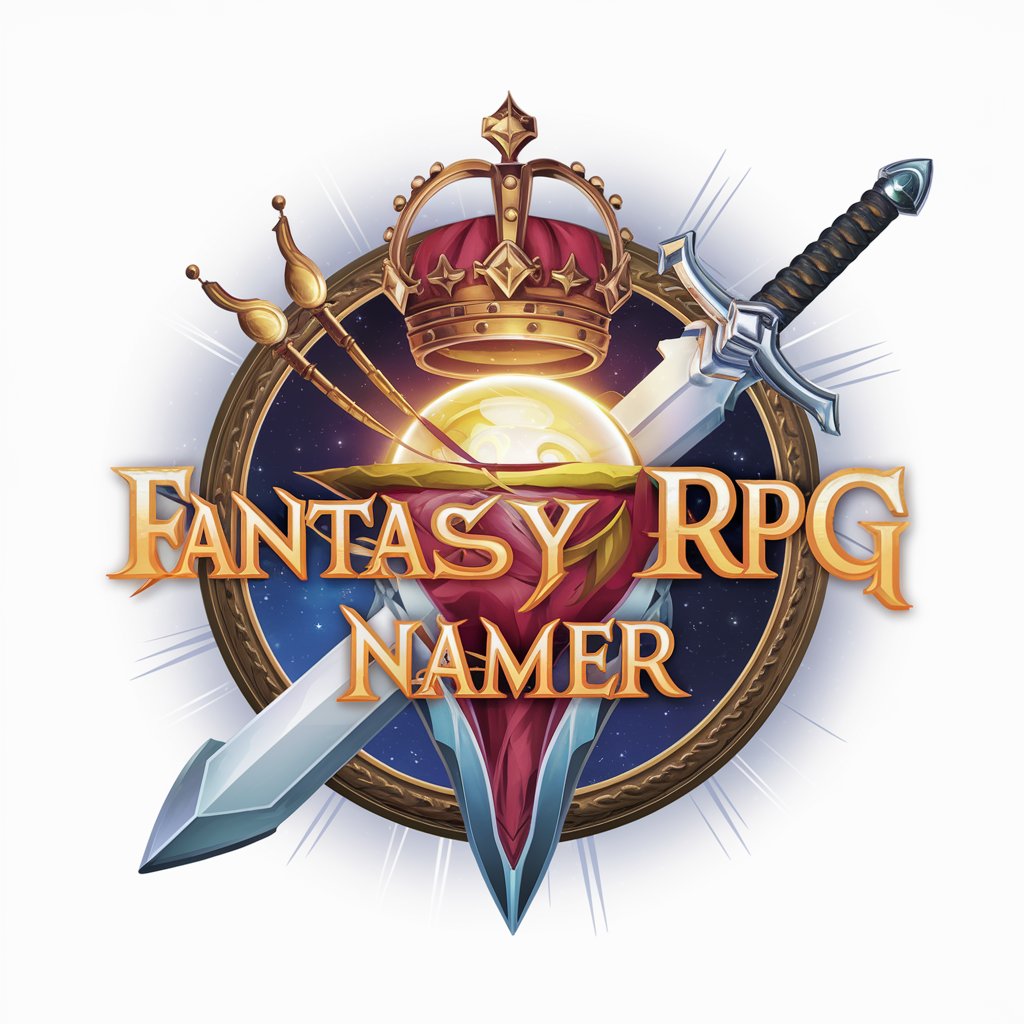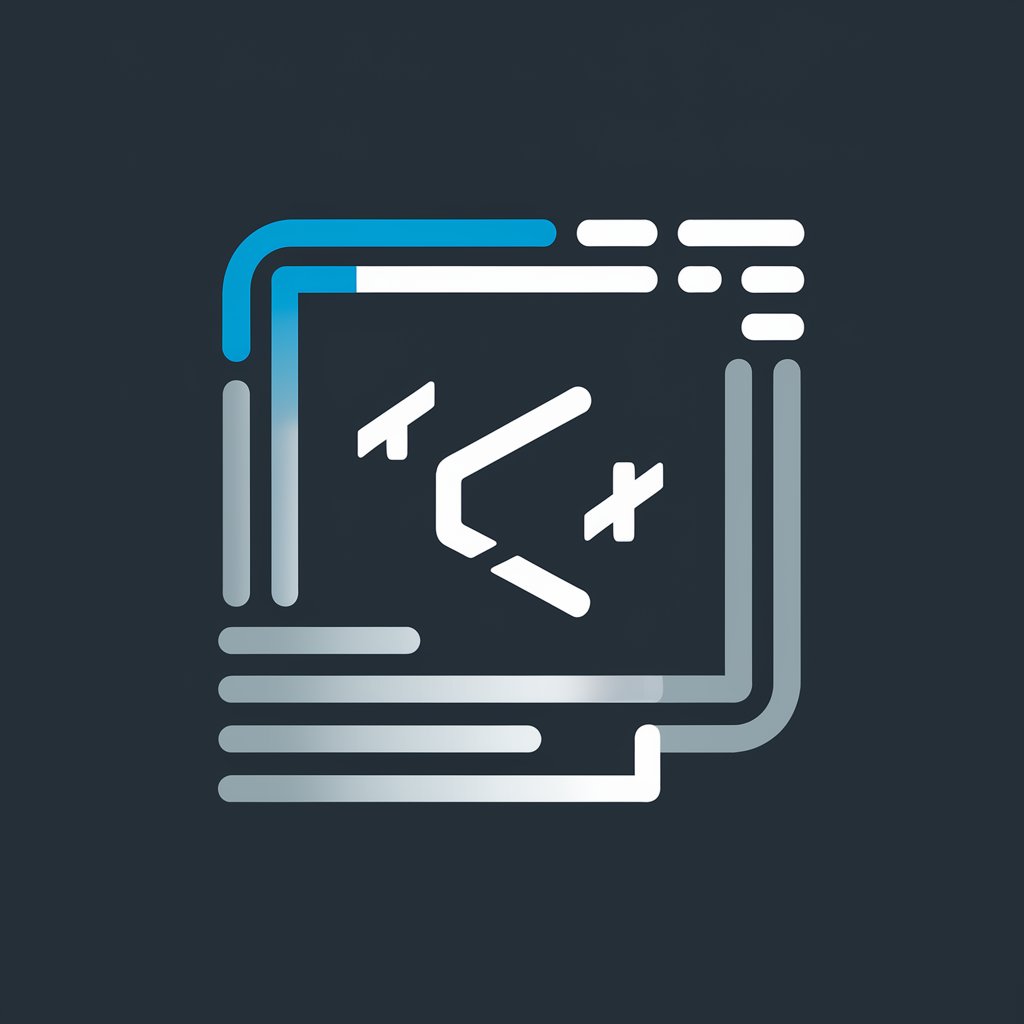👨💻 Functional Programming with Erlang - Erlang Functional Programming Guide

Hello! Ready to explore Erlang's functional programming?
Empower your code with Erlang's functional magic
How can I implement recursion in Erlang for...
What are the best practices for handling errors in Erlang functions?
Can you show an example of using higher-order functions in Erlang?
How do I achieve fault tolerance in a concurrent Erlang application?
Get Embed Code
Overview of Functional Programming with Erlang
Functional Programming with Erlang is designed to leverage the power of Erlang for building scalable, fault-tolerant applications. Erlang's functional programming paradigm emphasizes writing clean, side-effect-free code, adhering to principles of immutability and statelessness. This approach facilitates the development of systems that are highly reliable and easy to maintain. A key aspect of Erlang is its concurrency model, which allows for the creation of lightweight processes that can communicate through message passing, making it ideal for real-time systems and applications requiring high availability. Examples of its application include telecom systems, messaging services, and distributed databases, where Erlang's ability to handle large numbers of concurrent operations efficiently is a significant advantage. Powered by ChatGPT-4o。

Core Functionalities of Functional Programming with Erlang
Concurrency Management
Example
Creating a chat server that can handle multiple user connections simultaneously.
Scenario
In a chat application, Erlang's process model is used to spawn a new lightweight process for each user connection. This allows the server to manage thousands of concurrent connections efficiently, with each process handling messages from its respective user.
Fault Tolerance
Example
Automatically restarting a failed service component without affecting the rest of the system.
Scenario
Using Erlang's supervisor trees, a hierarchical structure of processes is created where supervisor processes monitor worker processes. If a worker process fails, its supervisor can restart it, ensuring the system continues to operate smoothly. This is particularly useful in telecom systems where service continuity is critical.
Real-time Data Processing
Example
Processing and aggregating live data streams from IoT devices.
Scenario
Erlang's ability to handle numerous concurrent processes makes it suitable for collecting and processing data from thousands of IoT devices in real-time. The functional programming model ensures that data processing is done in a clean, side-effect-free manner, allowing for accurate and reliable data aggregation.
Target User Groups for Functional Programming with Erlang
Telecommunications Engineers
Professionals working on building and maintaining scalable, high-availability telecommunication systems would greatly benefit from Erlang's concurrency and fault-tolerance capabilities. Erlang was originally designed for telecoms, making it exceptionally well-suited for this domain.
Software Developers in Distributed Systems
Developers tasked with building distributed applications, such as messaging platforms or live data processing systems, will find Erlang's process model and functional programming paradigm to be powerful tools for ensuring system reliability and performance.
IoT Solution Architects
With the growing demand for real-time data processing in IoT applications, architects and developers of IoT solutions can leverage Erlang to efficiently manage data streams from a vast number of devices, ensuring timely data processing and analysis.

How to Use Functional Programming with Erlang
1
Start your journey at yeschat.ai for a comprehensive trial, accessible without registration or the need for a premium subscription.
2
Familiarize yourself with Erlang's syntax and functional programming concepts through tutorials or documentation available online to grasp the basics of recursion, pattern matching, and immutability.
3
Experiment with simple Erlang functions to understand how to use pure functions that avoid side-effects, which is crucial for writing reliable and maintainable code.
4
Leverage Erlang's powerful concurrency features by learning about processes, message passing, and error handling to build scalable and fault-tolerant applications.
5
Join Erlang communities or forums to share your experiences, ask questions, and stay updated with the latest practices and tools in the Erlang ecosystem.
Try other advanced and practical GPTs
Culinary Companion
Your AI-powered culinary guide.

PPC Keyword Compiler
Optimize PPC campaigns with AI-powered keyword compilations.

Cupid's Calculator - Love Meter
Unlock the secrets of your heart with AI

Baby Name Explorer
Discover the perfect baby name with AI

Fantasy RPG Namer
Crafting Names, Building Worlds.

Challenger
Empowering Thought Through AI

Kei Shirogane
Enhance Your Charm with AI-Powered Insights

C++ Creativity in Game Design
Elevating Game Design with AI-Powered C++ Expertise

📚 Clojure Sequence Abstraction
Transform Data with AI-Powered Clojure Sequences

C++ 20 Code Evolution Unlocked
Elevate code with AI-powered C++20 insights

🖥️ Master Qt Framework for C++ GUI
Empowering C++ GUI Development with AI

Talk Get
Streamlining customer service with AI

Q&A on Functional Programming with Erlang
What makes Erlang ideal for concurrent programming?
Erlang is designed with concurrency in mind, featuring lightweight processes and robust message passing capabilities. Its concurrency model allows developers to create systems that can easily scale and handle multiple tasks simultaneously, making it ideal for applications requiring high availability and fault tolerance.
How does Erlang handle error recovery?
Erlang adopts a 'let it crash' philosophy, encouraging developers to write applications that can automatically recover from failures. It uses a supervisor hierarchy where processes monitor each other and can restart failed processes, ensuring system resilience and reliability.
Can Erlang be used for web development?
Yes, Erlang can be used for web development, particularly for backend services requiring high concurrency and uptime. Frameworks like Cowboy and Phoenix (through Elixir, an Erlang-based language) enable developers to build scalable web applications leveraging Erlang's strengths.
What are the benefits of functional programming in Erlang?
Functional programming in Erlang promotes immutability, pure functions, and side-effect-free code, leading to more predictable, easier to debug, and maintainable applications. It also simplifies reasoning about concurrent processes, crucial for building scalable systems.
How can beginners start learning Erlang?
Beginners should start with Erlang's official documentation and online tutorials to understand the basics. Practicing by building small projects, contributing to open-source Erlang projects, and participating in Erlang community forums are also great ways to gain proficiency.
